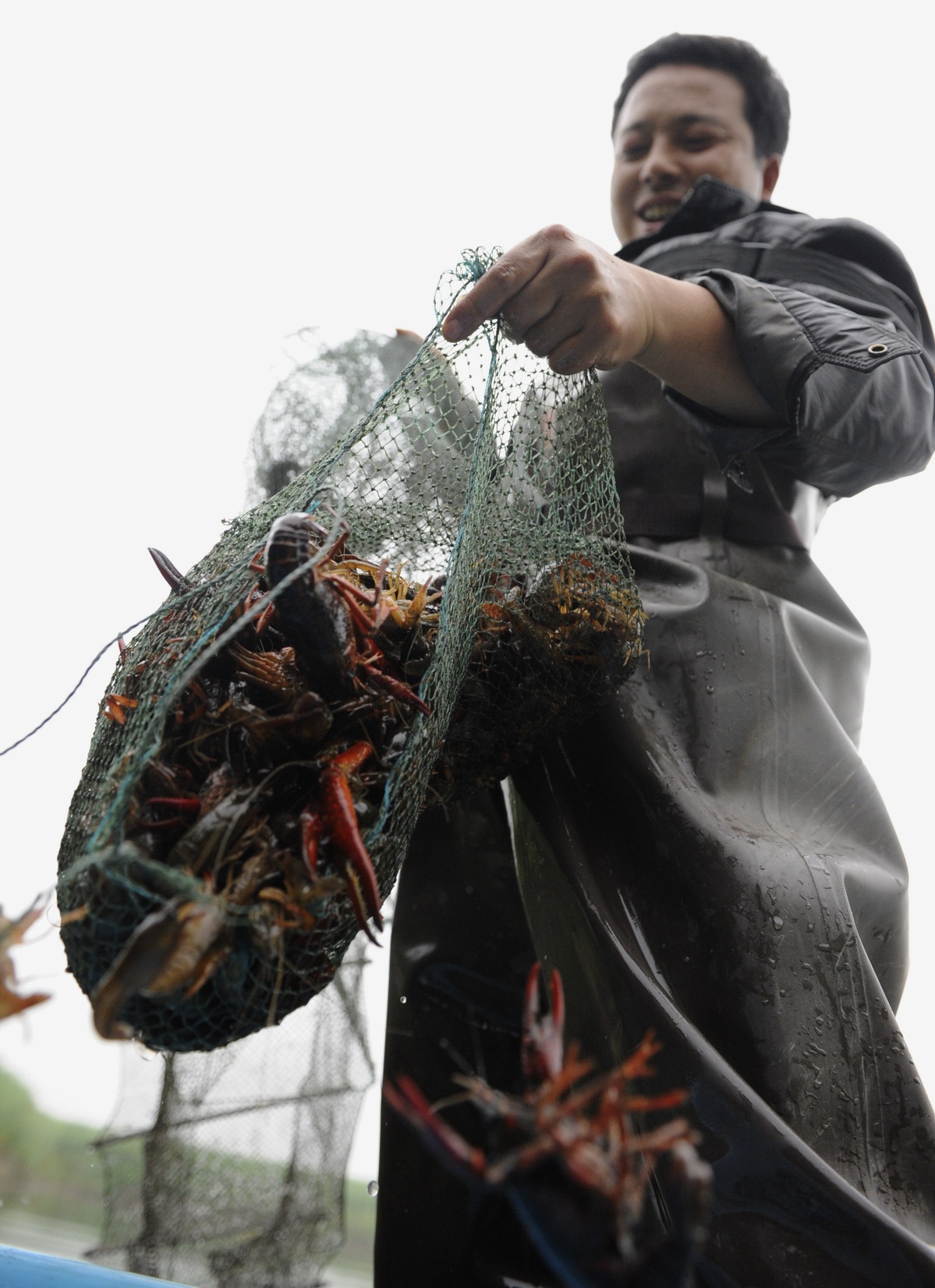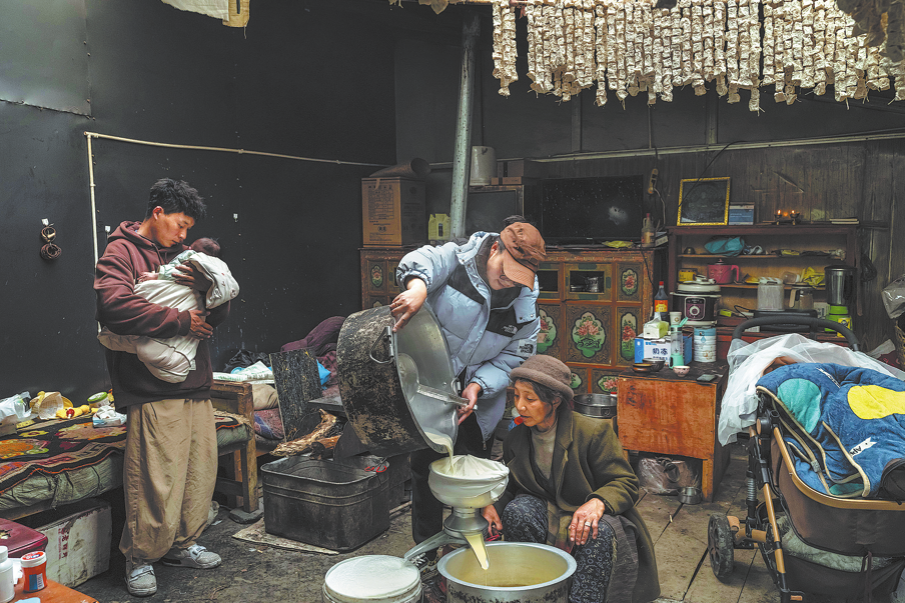Crawfish change struggling farmers' fortunes


Having worked in the aquaculture industry for more than a decade, Liu trusted his gut instinct and dived into crawfish raising to test whether the lobster-like crustacean could survive in local rivers on a large scale.
"In the first year, which was 1999, I devoted about half the contracted land to regular rice cultivation, and the other half to crawfish farming," he said.
"As the revenues turned out decent, I began scaling up production and rotating between crawfish and rice."
Since crawfish are highly tolerant of cold temperatures, the rotation method allows farmers to make use of the land during winter, when rice farming is halted.
"The timing works perfectly as seed crawfish are dispersed around September and mature crustacean will be ready for harvest the next May, to be followed by one crop of traditional rice planting," Liu said.
"Shifting to crawfish during several months also works to loosen the soil, remove weeds and fertilize the fields, which is beneficial for rice farming."
























